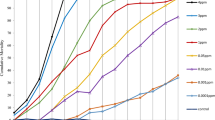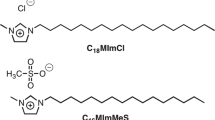Abstract
Dengue fever is an important vector-borne disease, mainly transmitted by Aedes aegypti. To date, there are no vaccines or effective drugs available against this arboviral disease. As mosquito control is practically the only method available to control dengue fever, alternative and cost-effective pest control strategies need to be explored. The gram-negative enteric bacteria Xenorhabdus and Photorhabdus are symbiotically associated with nematode parasites, which themselves are highly pathogenic for insect larvae. Here, we evaluate the oral toxicity of these entomopathogenic bacteria in A. aegypti larvae. The susceptibility of larvae (third late or fourth early instars) was assessed by exposing them to suspensions containing Photorhabdus luminescens or Xenorhabdus nematophila, respectively. Two diet treatments were tested with larvae fed on pet food and unfed larvae. After 24 h, larvae began to die when exposed to the bacteria. Exposure to P. luminescens killed 73 % of the fed and 83 % of the unfed larvae, respectively. In comparison, X. nematophila was less pathogenic, killing 52 % of the larvae in the fed and 42 % in the unfed treatment. Remarkably, cannibalism was observed in all bioassays after exposing larvae to either of the bacterial species. To our knowledge, this is the first report demonstrating the efficiency of these entomopathogenic bacteria for oral A. aegypti killing. Our results provide a promising basis for using these bacteria as bioinsecticides for mosquito control in the future.




Similar content being viewed by others
References
Ahantarig A, Chantawat N, Waterfield NR, ffrench-Constant R, Kittayapong P (2009) PirAB toxin from Photorhabdus asymbiotica as a larvicide against dengue vectors. Appl Environ Microbiol 75:4627–4629
Blackburn M, Golubeva E, Bowen D, Ffrench-Constant RH (1998) A novel insecticidal toxin from Photorhabdus luminescens, toxin complex a (Tca), and its histopathological effects on the midgut of Manduca sexta. Appl Environ Microbiol 64:3036–3041
Blackburn MB, Domek JM, Gelman DB, Hu JS (2005) The broadly insecticidal Photorhabdus luminescens toxin complex a (Tca): activity against the Colorado potato beetle, Leptinotarsa decemlineata, and sweet potato whitefly, Bemisia tabaci. J Insect Sci 5:32
Bowen D, Rocheleau TA, Blackburn M, Andreev O, Golubeva E, Bhartia R, ffrench-Constant RH (1998) Insecticidal toxins from the bacterium Photorhabdus luminescens. Science 280:2129–2132
Boyce R, Lenhart A, Kroeger A, Velayudhan R, Roberts B, Horstick O (2013) Bacillus thuringiensis israelensis (Bti) for the control of dengue vectors: systematic literature review. Trop Med Int Health 18:564–577
Braga IA, Mello CB, Montella IR, Lima JB, Martins Ade J, Medeiros PF, Valle D (2005) Effectiveness of methoprene, an insect growth regulator, against temephos-resistant Aedes aegypti populations from different Brazilian localities, under laboratory conditions. J Med Entomol 42:830–837
Brillard J, Ribeiro C, Boemare N, Brehélin M, Givaudan A (2001) Two distinct hemolytic activities in Xenorhabdus nematophila are active against immunocompetent insect cells. Appl Environ Microbiol 67:2515–2525
Buchanan RE, Gibbons NE (eds) (1974) Bergey’s manual of determinative bacteriology, 8th edn. Williams and Wilkins, Baltimore, 21202
Ehlers RU, Wulff A, Peters A (1997) Pathogenicity of axenic Steinernema feltiae, Xenorhabdus bovienii, and the bacto-helminthic complex to larvae of Tipula oleracea (Diptera) and Galleria mellonella (Lepidoptera). J Invertebr Pathol 693:212–217
Fischer-Le Saux M, Viallard V, Brunel B, Normand P, Boemare NE (1999) Polyphasic classification of the genus Photorhabdus and proposal of new taxa: P. luminescens subsp. luminescens subsp. nov., P. luminescens subsp. akhurstii subsp. nov., P. luminescens subsp. laumondii subsp. nov., P. temperata sp. nov., P. temperata subsp. temperata subsp. nov. and P. asymbiotica sp. nov. Int J Syst Bacteriol 49:1645–1656
Forst S, Dowds B, Boemare N, Stackebrandt E (1997) Xenorhabdus and Photorhabdus spp.: bugs that kill bugs. Annu Rev Microbiol 51:47–72
Goodrich-Blair H, Clarke D (2007) Mutualism and pathogenesis in Xenorhabdus and Photorhabdus: two roads to the same destination. Mol Microbiol 62:260–268
Gubler DJ (2011) Emerging vector-borne flavivirus diseases: are vaccines the solution? Expert Rev Vaccines 10:563–565
Guha L, Seenivasagan T, Bandyopadhyay P, Iqbal ST, Sathe M, Sharma P, Parashar BD, Kaushik MP (2012) Oviposition and flight orientation response of Aedes aegypti to certain aromatic aryl hydrazono esters. Parasitol Res 111:975–982
Heinz FX, Stiasny K (2012) Flaviviruses and flavivirus vaccines. Vaccine 30:4301–4306
Hinchliffe SJ, Hares MC, Dowling AJ, ffrench-Constant RH (2010) Insecticidal toxins from the Photorhabdus and Xenorhabdus bacteria. Open Toxinol J 3:101–118
Hoffmann AA et al (2011) Successful establishment of Wolbachia in Aedes populations to suppress dengue transmission. Nature 24:454–457
Koenraadt CJ, Takken W (2003) Cannibalism and predation among larvae of the Anopheles gambiae complex. Med Vet Entomol 17:61–66
Kovendan K, Murugan K, Vincent S, Kamalakannan S (2011) Larvicidal efficacy of Jatropha curcas and bacterial insecticide, Bacillus thuringiensis, against lymphatic filarial vector, Culex quinquefasciatus Say (Diptera: Culicidae). Parasitol Res 109:1251–1257
Kovendan K, Murugan K, Vincent S, Barnard DR (2012) Studies on larvicidal and pupicidal activity of Leucas aspera Willd. (Lamiaceae) and bacterial insecticide, Bacillus sphaericus, against malarial vector, Anopheles stephensi Liston. (Diptera: Culicidae). Parasitol Res 110:195–203
Lacey L (2012) Manual of techniques in insect pathology, 2nd edn. Academic, San Diego
Laughlin CA, Morens DM, Cassetti MC, Costero-Saint Denis A, San Martin JL, Whitehead SS, Fauci AS (2012) Dengue research opportunities in the Americas. J Infect Dis 206:1121–1127
Leles RN, D'Alessandro WB, Luz C (2012) Effects of Metarhizium anisopliae conidia mixed with soil against the eggs of Aedes aegypti. Parasitol Res 110:1579–1782
Liu D, Burton S, Glancy T, Li ZS, Hampton R, Meade T, Merlo DJ (2003) Insect resistance conferred by 283-kDa Photorhabdus luminescens protein TcdA in Arabidopsis thaliana. Nat Biotechnol 21:1222–1228
Lu P, Bian G, Pan X, Xi Z (2012) Wolbachia induces density-dependent inhibition to dengue virus in mosquito cells. PLoS Negl Trop Dis 6:e1754
Lucia A, Harburguer L, Licastro S, Zerba E, Masuh H (2009) Efficacy of a new combined larvicidal–adulticidal ultralow volume formulation against Aedes aegypti (Diptera: Culicidae), vector of dengue. Parasitol Res 104:1101–1107
Mahesh Kumar P, Kovendan K, Murugan K (2012) Integration of botanical and bacterial insecticide against Aedes aegypti and Anopheles stephensi. Parasitol Res 112:761–771
Mazzarri MB, Georghiou GP (1995) Characterization of resistance to organophosphate, carbamate, and pyrethroid insecticides in field populations of Aedes aegypti from Venezuela. J Am Mosq Control Assoc 11:315–322
Migula W (1895) Bacteriaceae (Stäbchenbacterien) In: Teil I, Abteilung Ia, Engler A (eds) Die Natürlichen Pflanzenfamilien. W. Englemann, Leipzig, pp 20–30
Otta DA, Rott MB, Carlesso AM, da Silva OS (2012) Prevalence of Acanthamoeba spp. (Sarcomastigophora: Acanthamoebidae) in wild populations of Aedes aegypti (Diptera: Culicidae). Parasitol Res 111:2017–2022
Owuama CI (2001) Entomopathogenic symbiotic bacteria, Xenorhabdus and Photorhabdus of nematodes. World J Microbiol Biotechnol 17:505–515
Prophiro JS, Silva OS, Luna JE, Piccoli CF, Kanis LA, Silva MA (2011) Aedes aegypti and Aedes albopictus (Diptera: Culicidae): coexistence and susceptibility to temephos, in municipalities with occurrence of dengue and differentiated characteristics of urbanization. Rev Soc Bras Med Trop 44:300–305
Rodriguez MM, Bisset JÁ, Diaz C, Soca LA (2003) Resistencia cruzada a piretroides en Aedes aegypti de Cuba inducido por la selección con el insecticida organofosforado malation. Rev Cubana Med Trop 55:105–111
Salokhe SG, Deshpande SG, Mukherjee SN (2012) Evaluation of the insect growth regulator Lufenuron (Match®) for control of Aedes aegypti by simulated field trials. Parasitol Res 111:1325–1329
Schleifer KH, Kilpper-Bälz R (1984) Transfer of Streptococcus faecalis and Streptococcus faecium to the genus Enterococcus nom. rev. as Enterococcus faecalis comb. nov. and Enterococcus faecium comb. nov. Int J Syst Bacteriol 34:31–34
Scott TW, Takken W (2012) Feeding strategies of anthropophilic mosquitoes result in increased risk of pathogen transmission. Trends Parasitol 28:114–121
Sheets JJ, Hey TD, Fencil KJ, Burton SL, Ni W, Lang AE, Benz R, Aktories K (2011) Insecticidal toxin complex proteins from Xenorhabdus nematophilus: structure and pore formation. J Biol Chem 286:22742–22749
Shi H, Zeng H, Yang X, Zhao J, Chen M, Qiu D (2012) An insecticidal protein from Xenorhabdus ehlersii triggers prophenoloxidase activation and hemocyte decrease in Galleria mellonella. Curr Microbiol 64:604–610
Shrestha YK, Lee KY (2012) Oral toxicity of Photorhabdus culture media on gene expression of the adult sweetpotato whitefly, Bemisia tabaci. J Invertebr Pathol 109:91–96
Silva JJ, Mendes J (2007) Susceptibility of Aedes aegypti (L) to the insect growth regulators diflubenzuron and methoprene in Uberlândia, State of Minas Gerais. Rev Soc Bras Med Trop 40:612–616
Thomas GM, Poinar GO Jr (1979) Xenorhabdus gen. nov., a genus of entomopathogenic, nematophilic bacteria of the family Enterobacteriaceae. Int J Syst Bacteriol 29:352–360
World Health Organization (1981) Instructions for determining the susceptibility or resistance of mosquito larvae to insecticides. WHO, Geneva, WHO/VBC/81.807
Acknowledgments
Research of R.H. was financially supported by the Deutsche Forschungsgemeinschaft (HE-5247/4-1). We thank Sabine Scheu for excellent technical assistance.
Author information
Authors and Affiliations
Corresponding author
Rights and permissions
About this article
Cite this article
da Silva, O.S., Prado, G.R., da Silva, J.L.R. et al. Oral toxicity of Photorhabdus luminescens and Xenorhabdus nematophila (Enterobacteriaceae) against Aedes aegypti (Diptera: Culicidae). Parasitol Res 112, 2891–2896 (2013). https://doi.org/10.1007/s00436-013-3460-x
Received:
Accepted:
Published:
Issue Date:
DOI: https://doi.org/10.1007/s00436-013-3460-x




